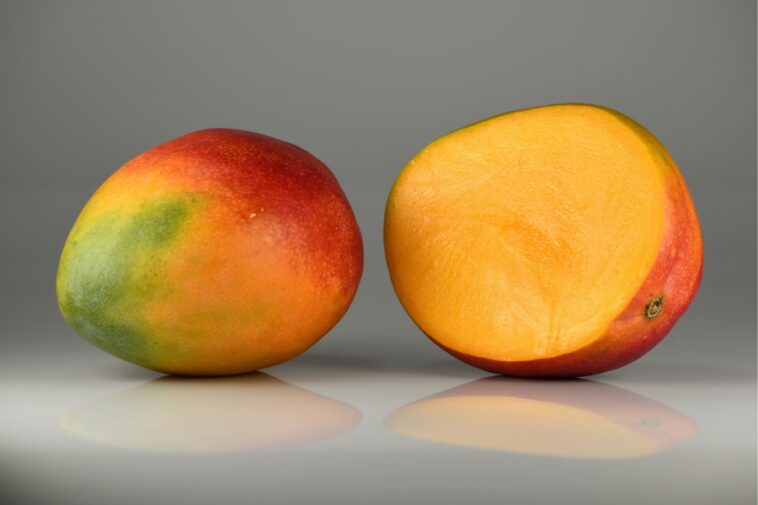Mangoes, with their exotic appeal and succulent nature, have long been cherished for their lusciously sweet flesh and bursting flavors that transport many to tropical paradise.
However, mastering the art of mango preparation can pose a challenge, especially when faced with the distinct oblong shape and tough pit that hides within. Thankfully, a variety of techniques exist to tackle this delicious dilemma, each promising a unique experience of savoring the alluring fruit.
Let’s delve into three widely-utilized methods: the classic cheek approach for elegant slices, the grid method for convenient cubes, and the julienne technique for those seeking a touch of finesse in their mango delights.
The Cheek Method
The cheek method is perhaps the most straightforward and commonly used technique. It’s ideal for those who want to maximize the amount of fruit they get while keeping the process simple. Here’s how to do it:
- Hold the Mango: Place the mango on a cutting board with the stem end facing up. Hold it steady with one hand.
- Locate the Pit: Mangoes have a large, flat pit in the center. The pit runs vertically along the length of the fruit. Visualize the pit as a central line dividing the mango into two halves.
- Cut Along the Pit: Using a sharp knife, make a cut approximately 1/4 inch from the center line on one side. This will slice off one “cheek” of the mango. Repeat on the other side to remove the second cheek.
- Remove the Flesh: You’ll now have two large, oval-shaped pieces of mango. To separate the flesh from the skin, you can score the flesh in a grid pattern and then scoop it out with a spoon, or simply peel the skin off by hand.
The Grid Method
The grid method is perfect for creating uniform, bite-sized pieces of mango. This technique is especially useful for salads, salsas, or garnishes. Follow these steps:
- Prepare the Mango: Start by cutting the mango into cheeks using the cheek method described above.
- Score the Flesh: Take one cheek and place it flesh-side up on the cutting board. Using a knife, make vertical and horizontal cuts in the flesh, creating a grid pattern. Be careful not to cut through the skin.
- Invert the Cheek: Gently push the skin side of the cheek upwards, causing the mango cubes to pop out. This will make it easy to remove the pieces with a spoon or knife.
- Repeat: Do the same for the other cheek. You can now enjoy perfectly cubed mango for any dish.
The Julienne Method
The julienne method is ideal for adding mango to stir-fries, salads, or for garnishing. This technique results in thin, matchstick-like strips of mango. Here’s how to julienne a mango:
- Cut the Mango into Cheeks: Begin by cutting the mango into cheeks using the cheek method.
- Peel the Skin: Once you have the two large mango pieces, use a knife or a vegetable peeler to remove the skin from each cheek.
- Slice into Strips: Lay each peeled mango cheek flat on the cutting board. Slice the mango into thin strips, creating julienne pieces.
- Adjust the Size: For thinner or thicker strips, adjust the width of your slices accordingly.
By developing proficiency in these three effective techniques, one can enhance their mango chopping skills significantly, resulting in a more efficient and enjoyable experience when preparing this delectable fruit.
Whether you favor the clean slices of the cheek method, the uniformity of the grid method, or the exquisite strips of the julienne method, you’ll be fully prepared to handle mangoes with confidence.
So, take a juicy mango and try out these strategies to add flavor to your meals and snacks!





GIPHY App Key not set. Please check settings